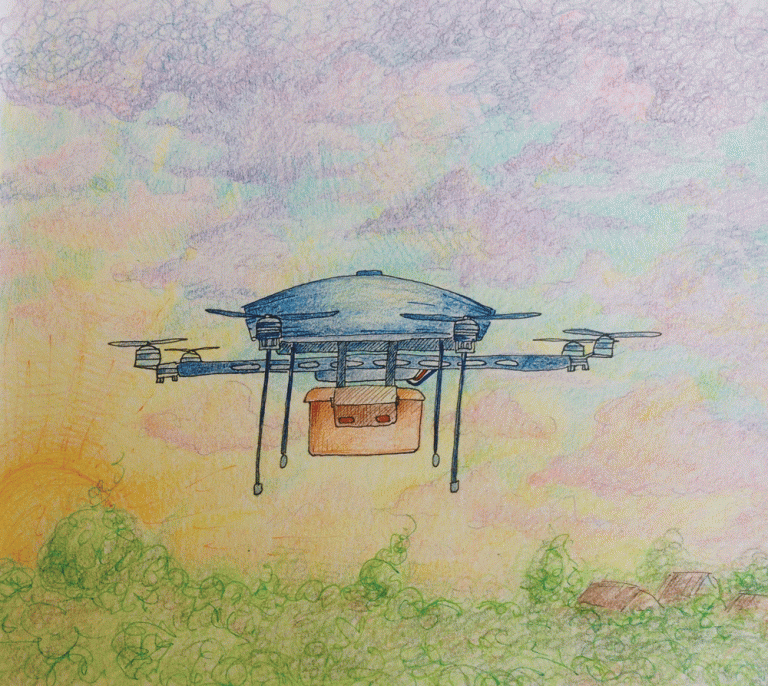
Jackie Caldwell
When you hear the word “drone,” what comes to mind? The remote-controlled camera-carriers from Best Buy? The way your high school physics teacher talked? What about futuristic delivery system?
Recently, retailers have been looking at how drones can be used to deliver commercial items to consumers. For instance, JD.com, China’s largest online retailer, has been using drones to deliver small packages to people in rural areas.
JD.com is also looking into using drones to transport items from remote regions to more populated areas. JD.com’s drones will be able to carry a payload of over one ton up to 186 miles. This will be especially helpful to farmers in the Shaanxi province, since Shaanxi roads can be difficult to traverse. The drones will allow perishable items such as meat, fruit, and vegetables to quickly reach more populated areas.
Amazon, whose national distribution for the United States matches that of JD.com in China, has also been looking into using drones for transporting goods. However, the Federal Aviation Administration (FAA) has limited Amazon’s ability to implement the program.
In 2013, Jeff Bezos, the Chief Executive Officer of Amazon, announced that Amazon.com was looking into implementing a drone delivery service known as Prime Air, but it wasn’t until almost a year later that the FAA granted Amazon a permit to fly. During that period, Amazon was determined to test their drones despite the delay and went to the United Kingdom. The UK has more lenient air traffic regulations than the United States. In December 2016, Amazon’s Prime Air delivered its first order in Cambridge. In the UK, Amazon’s drones are allowed to fly autonomously and out of the visual range of the drone pilot which is illegal in the U.S.
However, the FAA’s reluctance to permit drone use in America is warranted. Because drones can take clearer images than satellites can from the sky, many Americans have privacy concerns. Some people may also be alarmed at seeing drones flying overhead because of their association with warfare.
According to John Sifton, the advocacy director for Asia at Human Rights Watch, drones may make people especially uncomfortable because they know that military drones are primarily used to target individual humans while the perpetrator of the violence is absent. Drones create an alienated form of violence which may make them seem sinister.
Initially, drones were designed for military use. Corporations have been quick to embrace their efficiency and autonomy, but drone applications go beyond battle and delivery.
In Haiti, drones helped document the damage caused by Hurricane Matthew to determine what kind of aid to send and where to send it which was impossible with only satellites. Satellite imagery has a larger scale, but drones fly closer to the ground and take clearer, more detailed images than satellites do.
Drones can also provide assistance after a disaster because they can quickly transport items. In 2012, drones transported aid to people who had been injured in an earthquake in Nepal, and in 2015, Médecins Sans Frontières (MSF) piloted the use of drones to transport diagnostic samples from remote health centers to a general hospital for testing.
In recent years, the use of drones has extended beyond the military sector. Perhaps this is the reason that malfunction is the public’s primary concern about and not intentional misuse. Many remain indecisive about drone delivery according to the United States Postal Service Office of Inspector General; however, more Americans are open to drone delivery than opposed to it.










